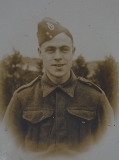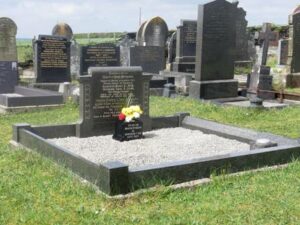Henllan Amgoed is a small village near Whitland, and forms part of the community of Henllanfallteg. The men of the village who fell during the Great War are commemorated on the village War Memorial, which sits in Henllan Amgoed Congregational Chapelyard. The memorial takes the form of an obelisk, and was made by H.F. Davies, of Carmarthen.
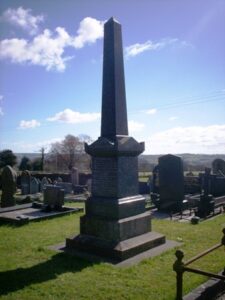
The Great War, 1914-1918
John Bowen, Private, 59427, Royal Welsh Fusiliers. John was the son of Thomas and Mary Bowen, of Maes-y-Bryn, Clynderwen. John enlisted at Pontardulais into the 2nd Battalion, Royal Welsh Fusiliers, who had been in France since 11 August, 1914. On 22 August they were attached to 19 Brigade and they fought in the rearguard actions from Mons toward the Aisne. On 12 October the Brigade became part of the 6th Division, who had been sent to France to reinforce the BEF on the Aisne, before moving to Flanders. On 31 May, 1915 the Battalion transferred to 27th Division, and on 2 August moved to the 2nd Division, where they took part in the Battle of Loos. After Loos the Battalion again transferred, moving to the 33rd Division, with whom they fought during the Somme Battles of 1916, The Battles of Arras in 1917, and during the Battle of Third Ypres, or Passchendaele. On 6 February, 1918 the Battalion again transferred, this time to the 115 Brigade, 38th (Welsh) Division. It was with the Welsh Division that the 2nd RWF took part in the major British offensives of 1918, after the German armies had burnt themselves out with their desperate offensive of Spring, 1918. The Division fought over the old Somme Battlefield, pushing the Germans back toward the Hindenburg Line, and took part in the Battle of Havrincourt on 12 September, where John was sadly killed in action that day, aged only 22. He is buried at Gouzeaucourt New British Cemetery. John is commemorated at Whitland, Llandysilio and Pontardulais.
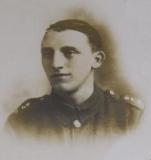
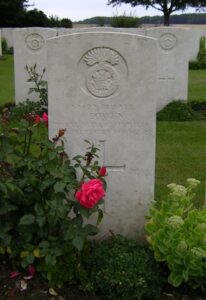
Albert Edward Drew, Private, 12146, Hampshire Regiment. Albert was born at Much Marcle, Herefordshire, the son of Ernest Charles and Marion Drew. The family later lived at Bilverton, Sandlands Road, Walton-on-the-Hill, Tadworth, Surrey. Albert lived and worked at Llanfallteg prior to the war, and enlisted at Newbury, Berkshire into the Warwickshire Regiment. He was later posted to France where he joined the 2nd Battalion, Hampshire Regiment. The battalion had fought at Gallipoli with 88 Brigade, 29th Division, and on 20 March 1916 landed at Marseilles for service in France. It had its baptism of fire on the Somme, taking part in the opening assault of 1 July 1916. Albert was hospitalised for a while after suffering shell shock during the Somme offensive. In the spring of 1917 the division fought at the Battle of the Scarpe, which was part of the Arras Offensive, and then moved further north to Ypres. Here they fought at the Battle of Langemarck, and then at the Battles of the Menin Road, Polygon Wood, Broodseinde and Poelcapelle, before moving to Cambrai. Here they fought at the Battle of Cambrai in November and December 1917, before moving back to Flanders early in 1918. Albert was killed during the German offensive on the Lys on 13 April 1918. He was 21 years old, and is buried at Cabaret-Rouge British Cemetery, Souchez, France. Albert is not commemorated locally.
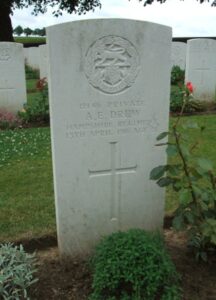
Arthur Ethelred Evans, Private, 260436, Gloucester Regiment. Arthur was born at Llanddewi in 1885, the son of Thomas and Margaret Evans. His parents later resided at New House, Llanfallteg. He married Edith Maud James, of Victoria Avenue, Fishguard, in 1908 and enlisted there into the South Wales Borderers following the outbreak of war. Arthur was later transferred to the 12th (Bristol City) Battalion, Gloucestershire Regiment, which had been raised at Bristol on 30 August 1914 and by June 1915 had moved to Wensleydale, joining 95 Brigade, 32nd Division. The Division landed in France on 21 November 1915, and fought on the Somme later in 1916. During October 1917, the 12th Gloucesters were fighting at Ypres, taking part in the Battle of Passchendaele. On 1 October 1917 the battalion moved into the front line at Meteren to relieve the 11th Battalion, West Yorkshire Regiment, and spent the following day consolidating the trenches. It was while carrying out this work that Arthur was killed in action, when the battalion came under bombardment by German gas shells on 2 October 1917. He was 32 years old, and is commemorated on the Tyne Cot Memorial, Belgium. Arthur is not commemorated locally, but is commemorated at Fishguard.
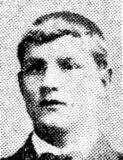
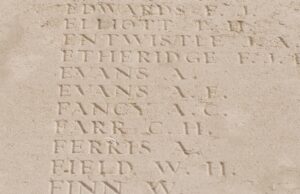
William Evans, Driver, 24474, Royal Field Artillery. William was the son of Stephen and Anne Evans, of Efailfach. William lived with his sister Phebe at Llwyndu prior to moving to Gilfach Goch, to work as a Collier. He enlisted at Tonyrefail on 1 September 1914 into the Royal Field Artillery, and on 1 August 1915 landed at Gallipoli with the 39th Brigade, Royal Field Artillery. After the evacuation from Gallipoli in January 1916, William was posted to France, joining ‘B’ Battery, 33 Brigade, which was attached to the 8th Division. The 8th Division was a regular army unit which moved to the Western Front during September 1914. It was formed of units brought back from around the Empire, and fought at all of the major actions of the war, at Neuve Chapelle, Aubers, and Bois Grenier, before moving to take part in the Somme Offensive. It was during the Battle of Le Transloy that William was killed in action on 7 November 1916, aged 34. He is buried at Pozieres British Cemetery, France.
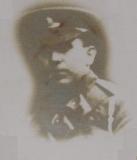
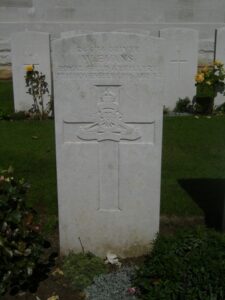
John Tyson Lloyd, Private, 435, Welsh Horse. John was the son of Peter and Ada Lloyd, of Parciau, Henllan Amgoed. He worked as a Groom for Dr. Thomas, at Hillside, Whitland prior to the war and enlisted at Cardiff on 10 September 1914 into the newly formed 1/1st Battalion, Welsh Horse Yeomanry. By early 1915 the Welsh Horse had moved to Diss, attached to the 1/1st North Midland Mounted Brigade, 1st Mounted Division. In September 1915 the Welsh Horse were dismounted and sailed from Liverpool in the S.S. Olympic on 25 September, and landed at Anzac Cove on 10 October 1915, joining the 54th Division as Pioneers. John was invalided with Gallipoli in November 1915 after taking ill, and was found to have contracted tuberculosis during the campaign. He was invalided to England, and sent to the Udal Torre Sanatorium at Yelverton, Devon for treatment. John was discharged from Udal Torre on 17 July 1916 and returned home, dying on 24 March 1917, aged 21. John’s case was submitted to the CWGC on 4 May 2013, and he was accepted as a war casualty on Friday 25 July 2014. He will be commemorated in the United Kingdom Book of Remembrance for now, but I have since discovered that he is buried in Henllan Amgoed, and the CWGC will shortly be erecting a headstone for him.
Dan Phillips, Corporal, 40214, Royal Welsh Fusiliers. Dan was the son of William and Anne Phillips, of Blaenhiraeth, Henllan, Whitland. He was educated at Whitland Grammar School and was a student at the South Wales Training College at Carmarthen when he enlisted there into the army and was posted to France in 1916, joining the 10th Battalion, Royal Welsh Fusiliers, which was attached to 76 Brigade, 3rd Division, and had suffered heavy casualties during its first major action, at the St. Eloi craters, south of Ypres. The division moved south to the Somme, entraining at St. Omer on 1 July 1916 and reached Carnoy on 13 July, while the Welsh Division was moving away from the same area following its assault on Mametz Wood. By now Dan had been promoted to Acting Corporal. The 3rd Division moved into the line on 14 July in order to take part in the assault on Delville Wood, Longueval and Bazentin le Grand. The 10th RWF remained in reserve for the initial attack, but would soon be thrown into the fray as on 20 July was given the task of entering Delville Wood and clearing along Princes Street. The battalion suffered heavily before reaching the wood, where South African scouts met them and the 10th RWF advanced into a fierce fight which earned the battalion two Victoria Crosses. The 10th RWF, relieved from Breslau Trench on 25 July, did not go back into action until moving back into the front, reaching Talus Wood on 14 August, and its officers reconnoitred the Casement, Dublin and Chimpanzee trenches in front near Guillemont before taking them over on 15 August and spent much of the day consolidating them, suffering three men killed and four wounded. On the following day the battalion attacked Lonely Trench, but were beaten back, suffering five officers and 116 men killed between 16 and 19 August. Dan was posted as missing during the initial attack on Lonely Trench on 16 August 1916. He was later found to have been killed in action that day. He was 25 years old and is commemorated on the Thiepval Memorial, France. Dan is also commemorated in the Memorial Hall at Whitland and also at Whitland Grammar School.
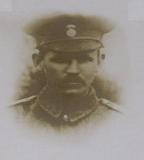
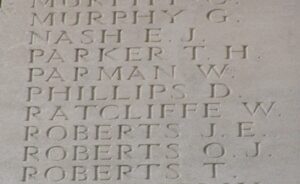
Willie Morris Thomas, Private, 73210, Royal Welsh Fusiliers. Willie was the son of William and Martha Thomas, of Brynawel, Henllan Amgoed, Whitland. He enlisted at Carmarthen originally into the South Wales Borderers, but transferred into the 9th Battalion, Royal Welsh Fusiliers, part of 58 Brigade, 19th (Western) Division. The Battalion landed at Boulogne on 19 July 1915 and fought during the Battle of Loos, the Battle of the Somme, and the Battles of Third Ypres, gaining themselves a reputation as one of the best Divisions on the Western Front. The division suffered heavily during the German Spring Offensive, being caught up in the German attack on the Eastern Somme sector during the First Battle of Bapaume, and Willie was killed in action in the area between Achiet-Le-Petit and Sailly-Au-Bois on 26 March 1918, aged just 19. He is buried in H.A.C. Cemetery, Ecoust-St. Mein, France.
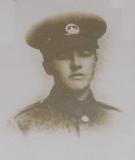
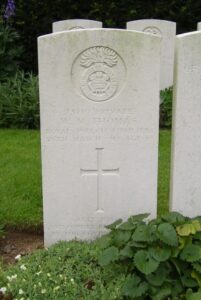
World War Two, 1939-1945
Parry Glyn Morgan, Signalman, 2334207, Royal Signal Corps. Parry was born on 20 November 1919, the son of Henry David Morgan and Lilian Edith Maud Morgan, of Compton House, Llanfallteg. He enlisted in the Royal Corps of Signals, along with his brother Walter, and was transferred to Malaya Command. Parry was taken Prisoner by the Japanese in Thailand, and was marched, alongside thousands of other POW’s to the POW base at Kanburi, where the men were distributed to other camps from which they would build the Burma Railway. Parry died of malnutrition whilst working on the Burma Railway, on 9 June 1943 aged 23, and is buried at Kanchanaburi War Cemetery, in Thailand, near Kanburi. His brother Walter had died in 1940.
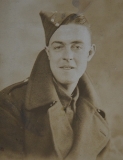
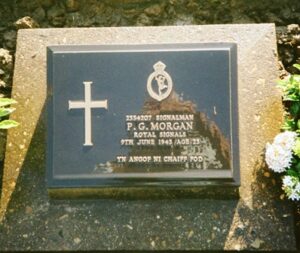
Walter Hugh Morgan, Signalman, 2362588, Royal Signal Corps. Walter was born on 5 August 1918, the son of Henry David and Lilian Edith Maude Morgan, of Compton House, Llanfallteg. He was serving as a signaller with the Trades Services Battalion, but contracted appendicitis on active service. Walter died under anaesthetic at St. Asaph on 3 January, 1940 aged just 22. He was buried with full military honours in Henllan-Amgoed Congregational Chapelyard. His brother Parry died in Burma in 1943.
